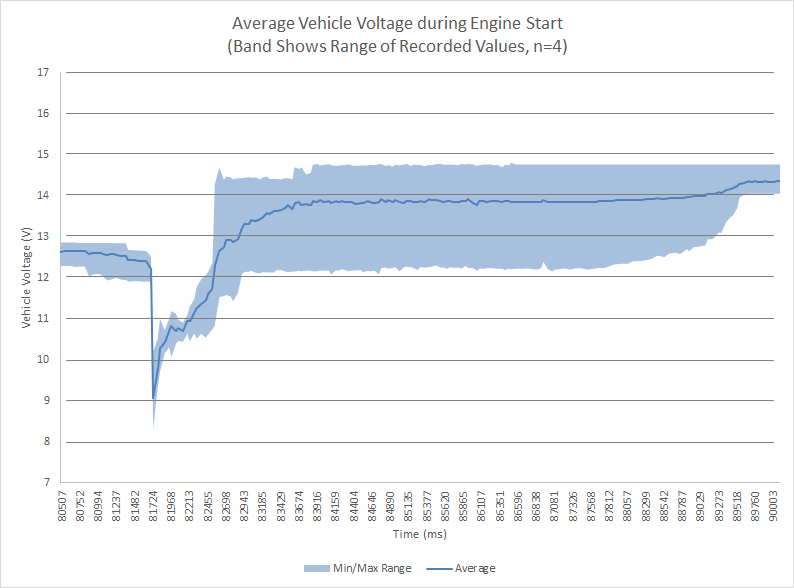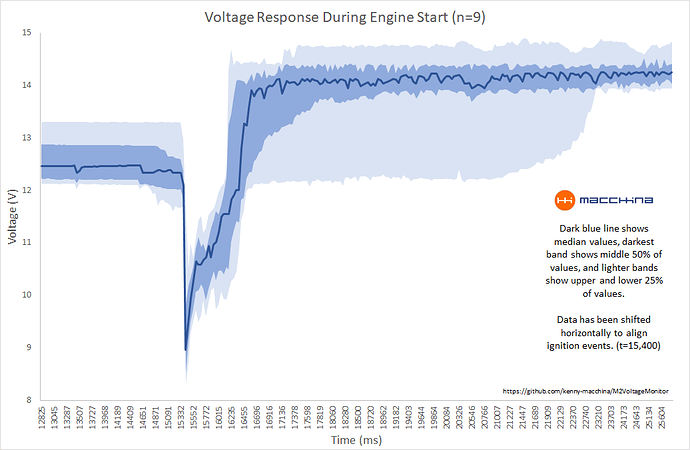The idea of monitoring voltage to detect starting is certainly valid. However, I would also suggest to back it up with additional testing. The nice thing about voltage monitoring is that it can be done by comparators at extremely low current draw. That’s great for producing a wake up for larger current draws but is also prone to some false positives and negatives. So, one approach would be to produce a voltage response that seems characteristic of an engine start but make it a bit “Wide” so that it quite easily triggers. Then when the voltage comparisons trigger do an OBDII PID request for engine RPM. Obviously a started engine will show some RPM while an idle engine will not. I have to assume that this will work even for a hybrid. But, yes, I’d also love to see what the voltage profile looks like when the ICE starts in a hybrid. They don’t need a starter, the electric motor is already spinning and can kick start the gas engine. They probably use a DC/DC converter to keep the 12v battery fresh so the voltage is not likely to change a lot much of ever. But, so long as the DC/DC converter is on you aren’t going to drain the 12v battery either.
Then, there are full electric cars. They never start a gas engine so the voltage profile for the 12v battery is even stranger. In an electric car the 12v battery will rest at a certain voltage, say 12.8v but as soon as you power it up the DC/DC converter will push that voltage up past 14v very rapidly. Thereafter it is likely to settle to whatever voltage the DC/DC converter puts out and stay there as long as the car is on.
In either a hybrid (increasing common these days. In fact, I think non-hybrid vehicles will quit being produced soon) or a full electric whether a gas engine is running or not is functionally irrelevant. It means nothing at all. What really needs to be known across all three vehicle types is whether it is “running” or not. The definition of running is a bit different between the three types. There are a few things in common between them:
- The voltage of the 12v system will change depending on whether the car is “on” or not.
- There will be changes in the CAN traffic. Some vehicles have no CAN traffic at all when off for a sufficiently long time, some continue to send some traffic but far less than when they are on
I would suggest that the definition of ON for all three would be the battery going over a certain threshold. When you fire up an EV the battery jumps in voltage. When you power on a hybrid, same thing. When you start a gas engine the voltage sags then jumps up but it still makes it higher than the resting voltage very soon after starting. So, maybe a voltage threshold followed by PID queries if possible to check for standardized data that suggest the vehicle is ON (be that RPM, run time, etc).



